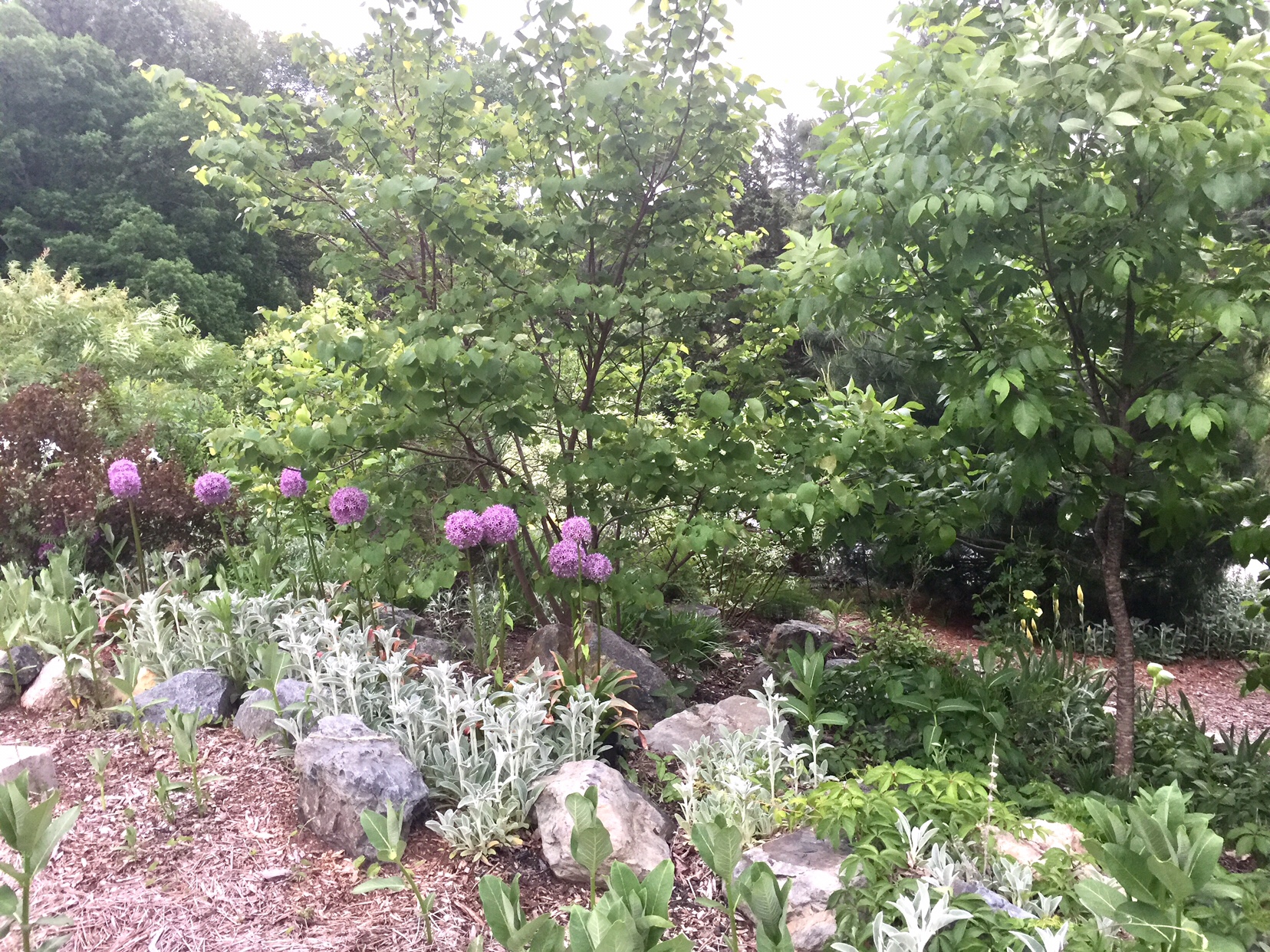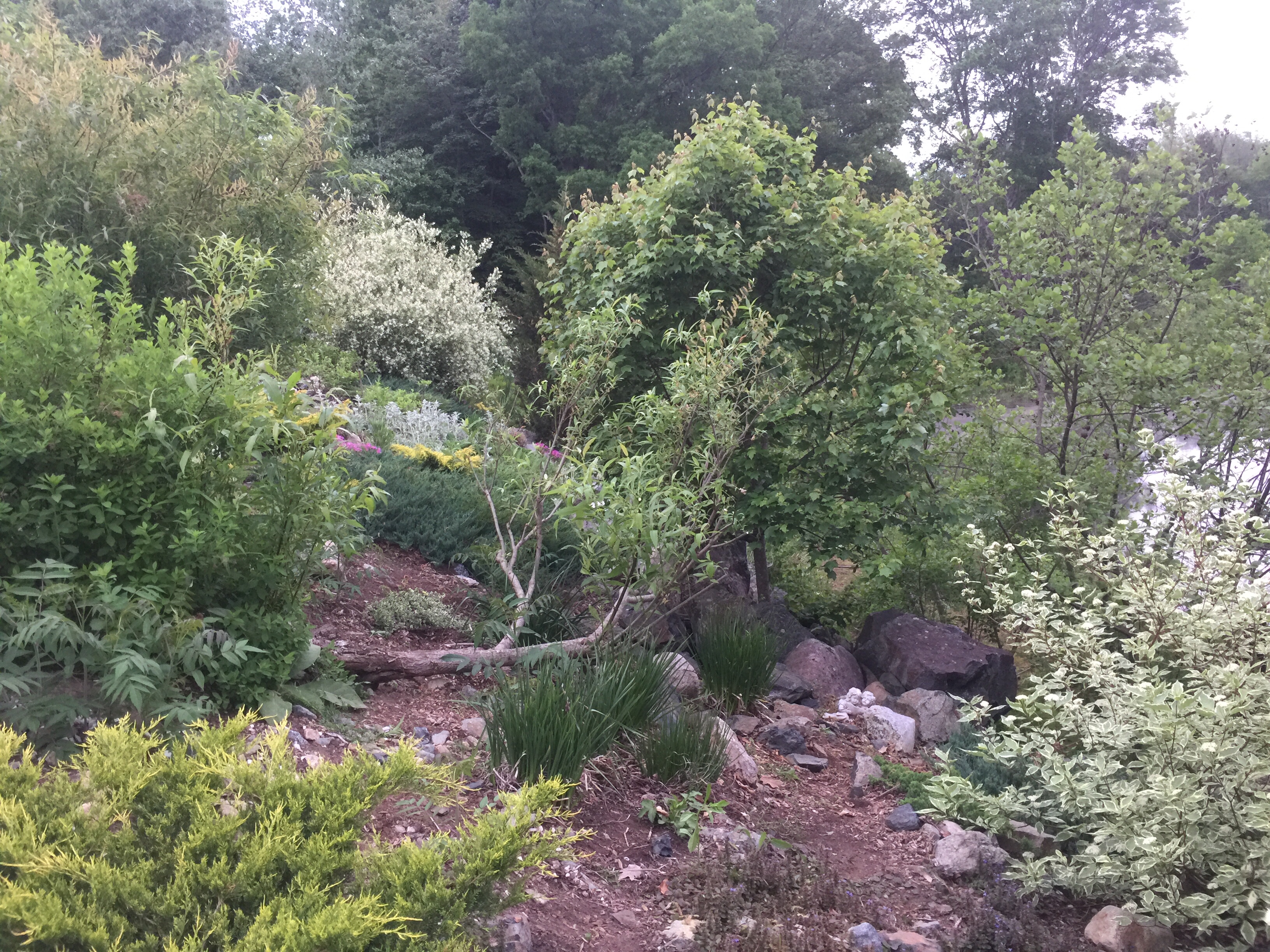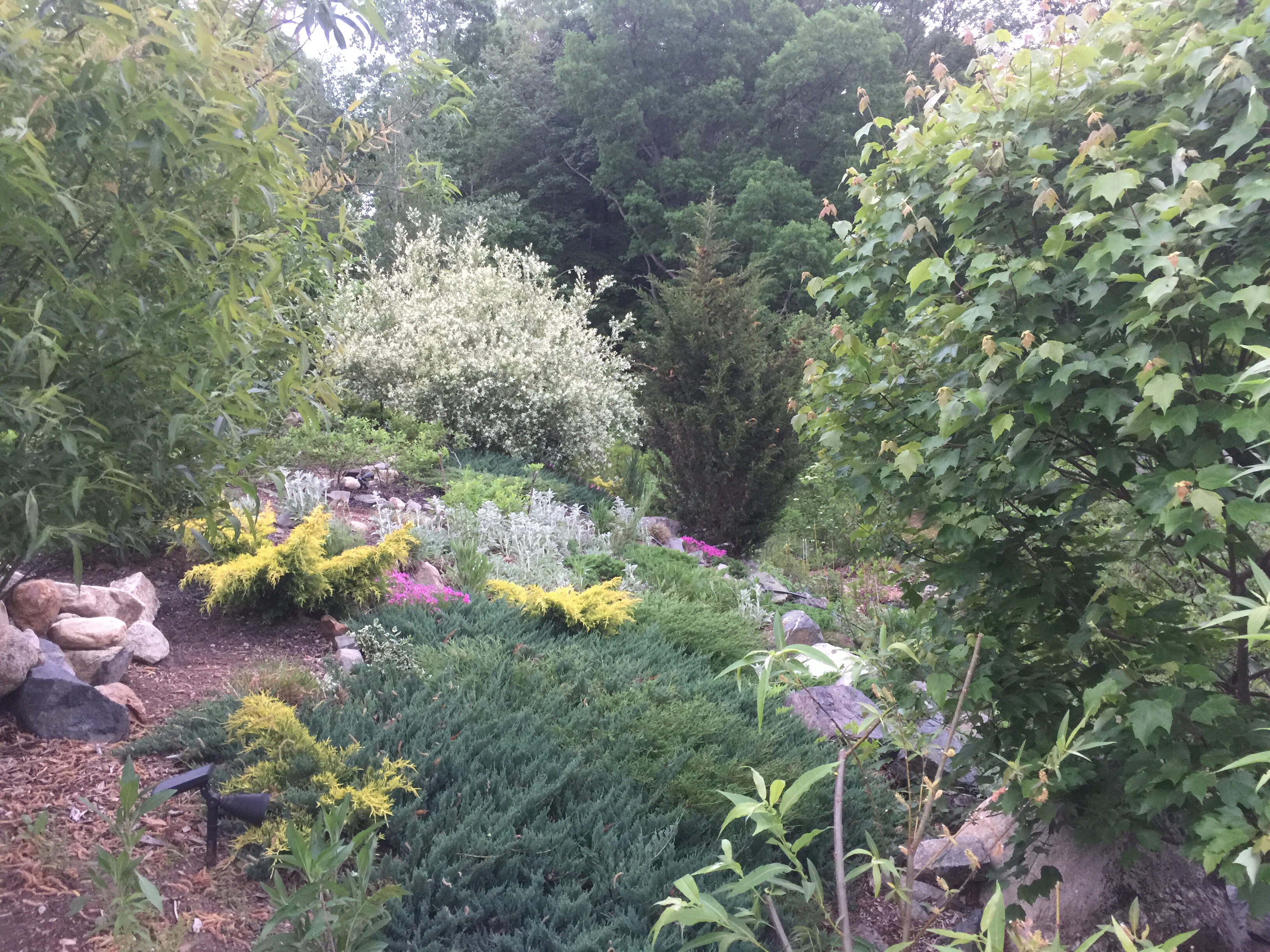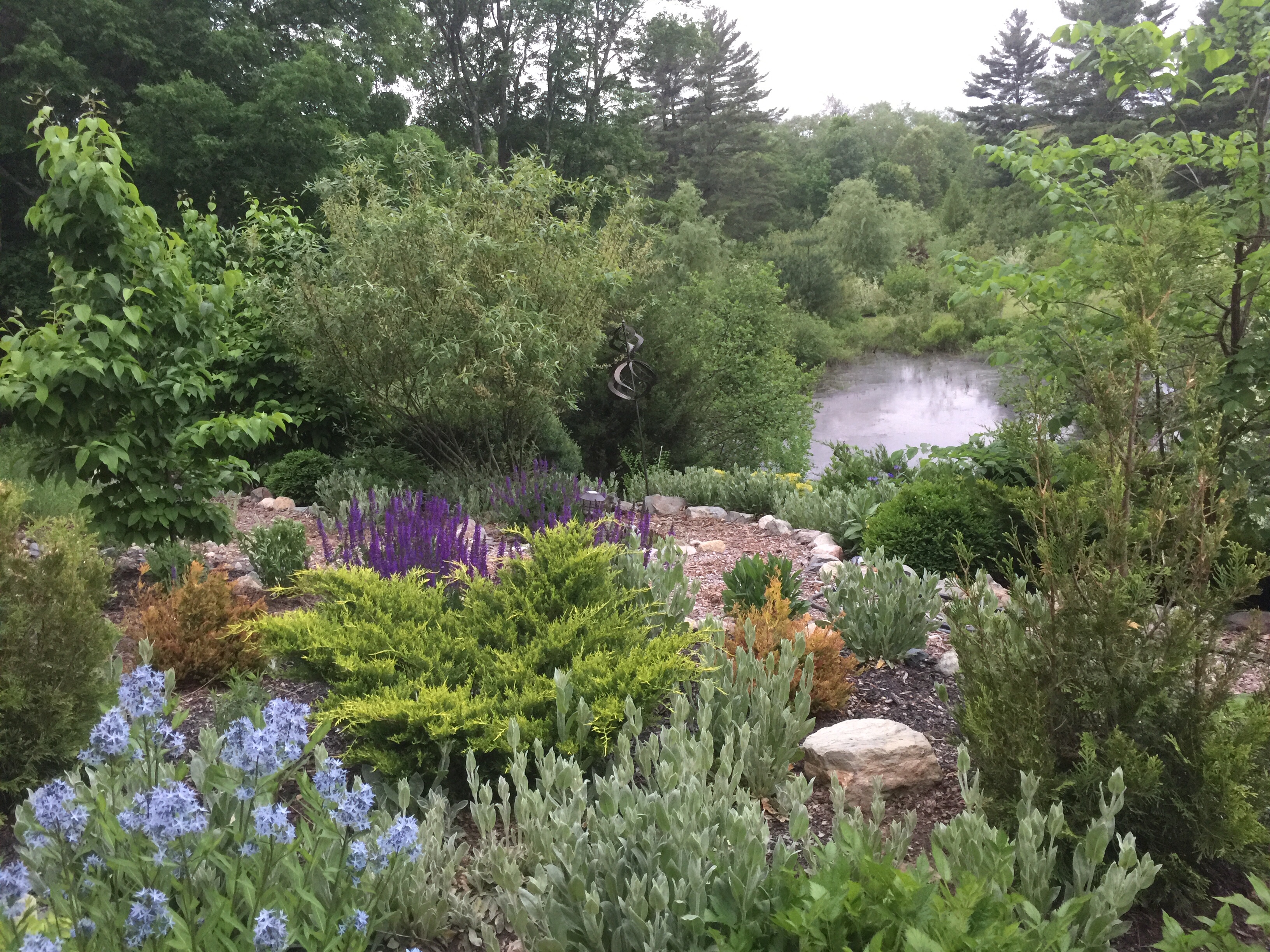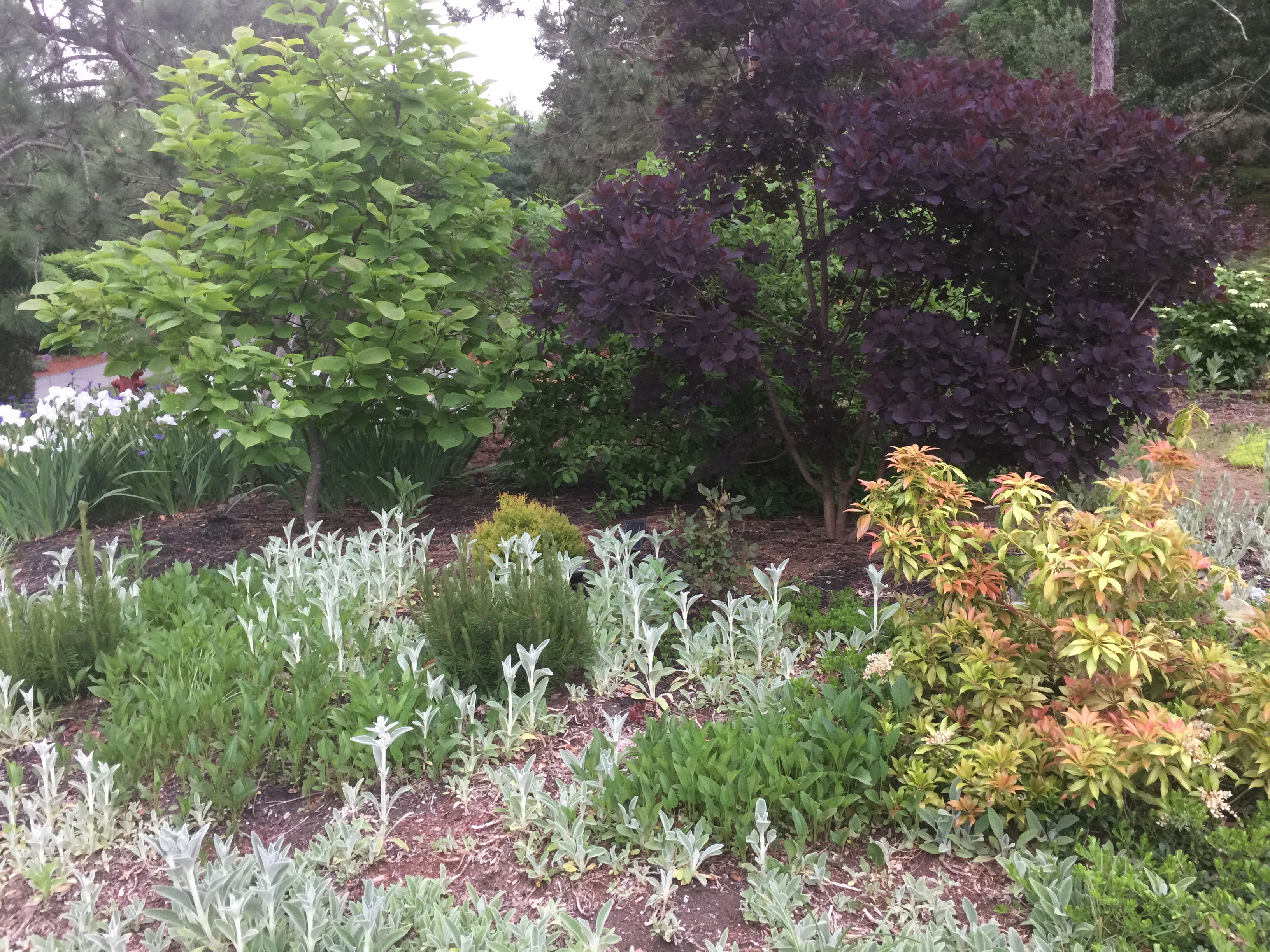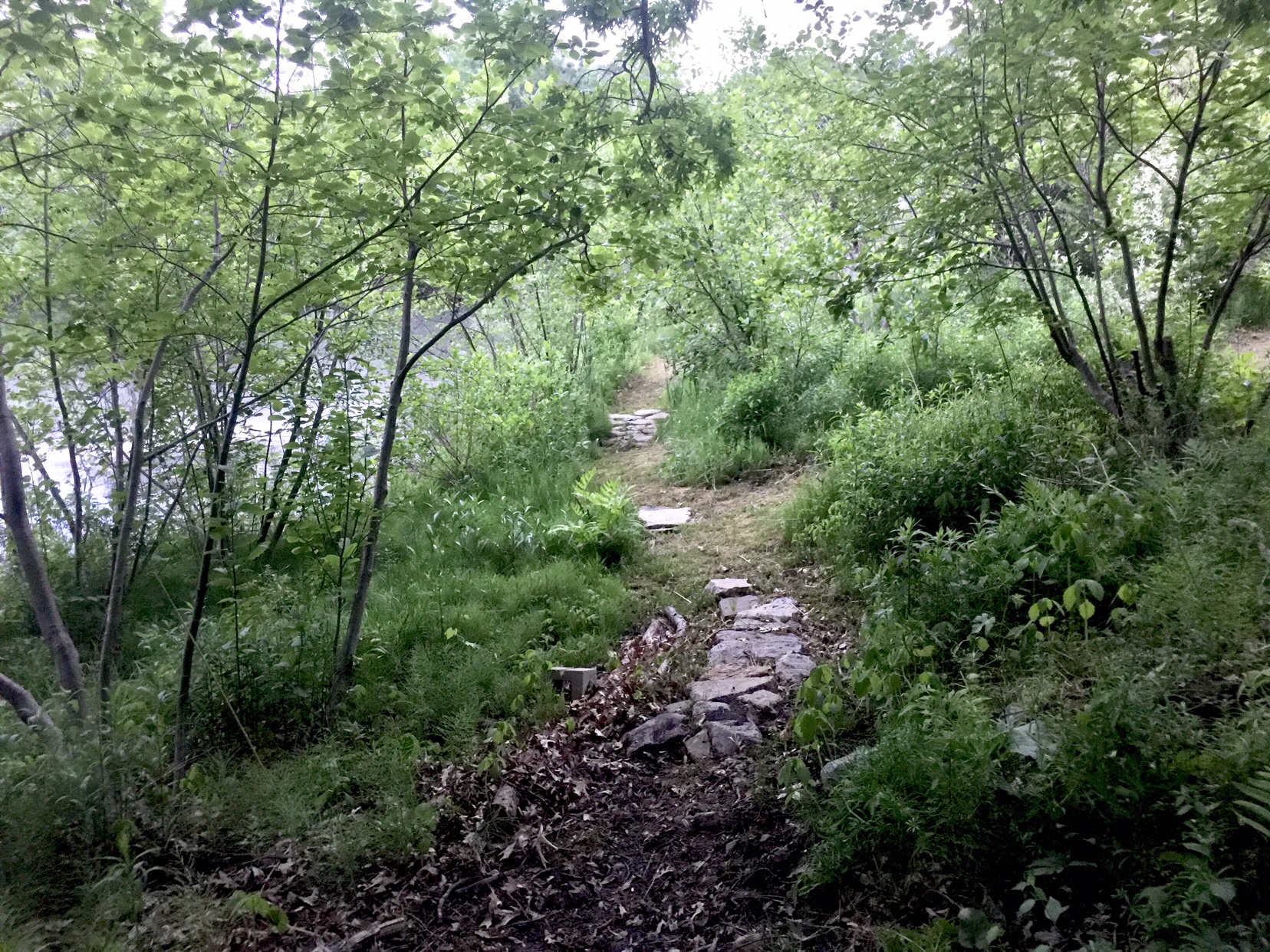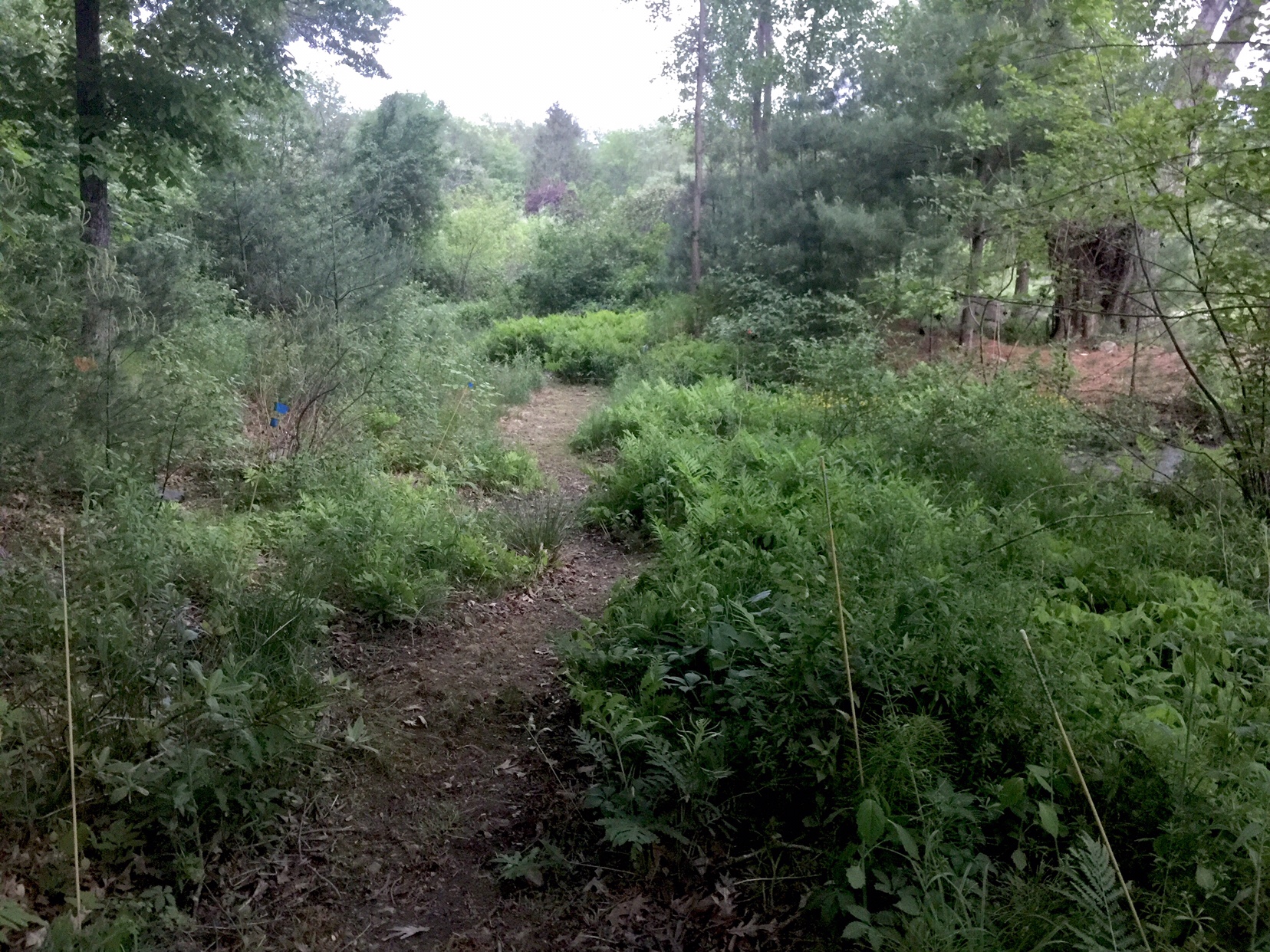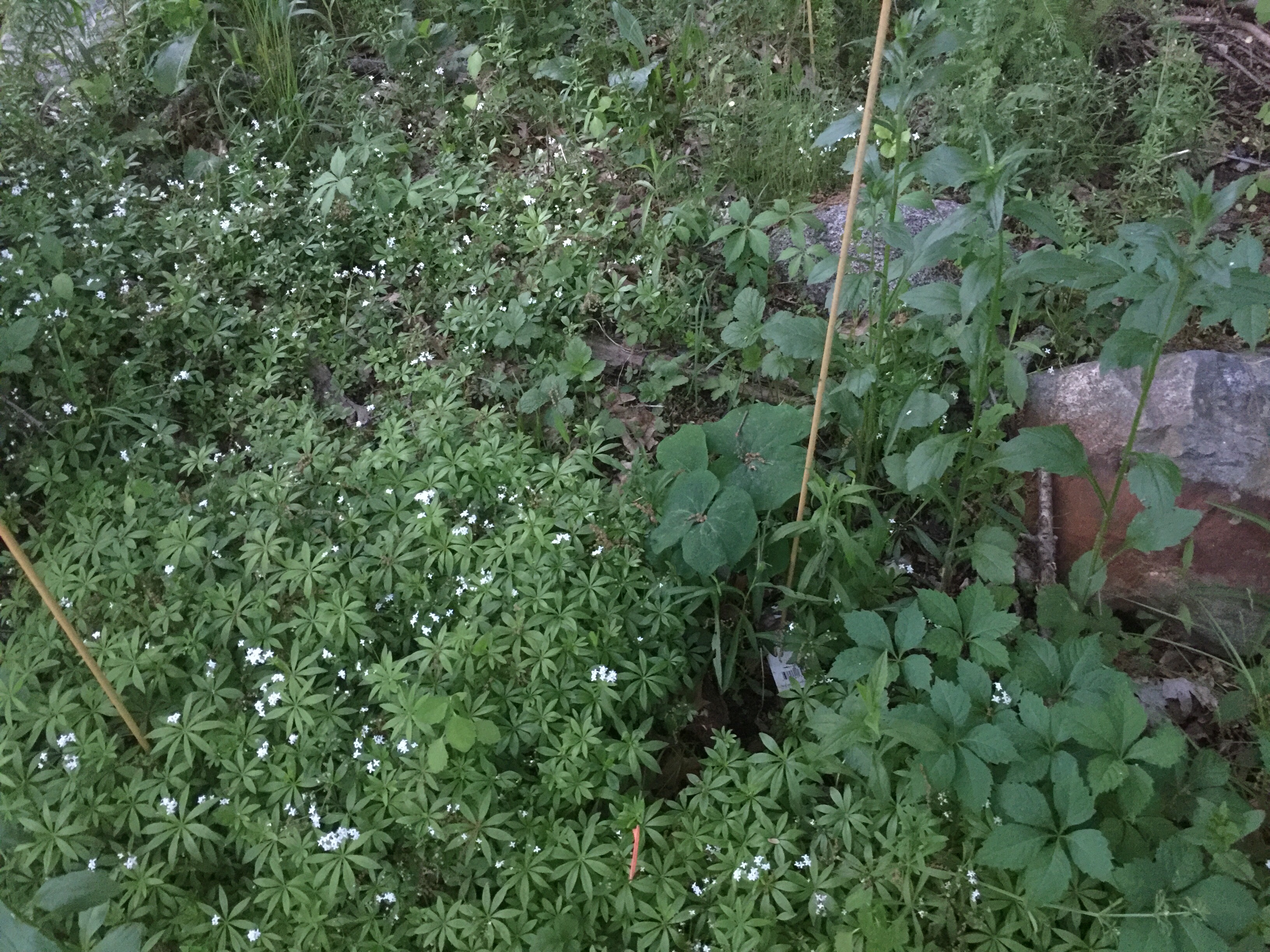The redbud front and center has evolved on the windy slope as a large shrub. To the right is an ash I’ve kept small by pruning. To the left is a burgundy-colored ninebark. Behind that, staghorn sumac and willow. In front is a row of globemaster alliums that I scored at Costco one year. Rocks and lambs’ ears serve as edging.
